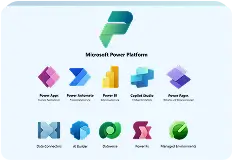Table of Contents
Introduction to Responsive Web Design
Design is the first thing that a user notices when they visit a website. Whether we like it or not, the design and layout of a website often leave a lasting impression on users that developers struggle to change. Therefore, it is important to follow the latest web design trends, with responsive web design being a prominent one.
Responsive web design ensures that a website is flexible and can adapt to any screen size, from large desktop monitors to small smartphones. Web design services use responsive design to ensure that a website looks and functions well on any device that a user may prefer.
In this blog, we will discuss responsive web design in more detail and how it can improve user experience on a website.
What is Responsive Web Design?
Responsive web design means building websites that adapt seamlessly across devices, supporting scalable, user-friendly white label wordpress website design. This ensures that users have a consistent and optimized experience regardless of the device they are using to access the website. By using flexible grids, layouts, and CSS media queries, responsive web design allows websites to adjust dynamically to different screen sizes, making it easier for users to navigate and interact with the content. This approach prioritizes user experience by ensuring that content is easily accessible and functional across various devices, ultimately leading to higher engagement and conversion rates. In today’s digital world, responsive web design is essential for catering to the diverse ways users consume online content, improving brand image, and enhancing SEO performance.
Why is Responsive Web Design Important?
Responsive web design is extremely important for ensuring a smooth user experience across different devices. It is crucial to have a website that appears and works well on desktop computers, laptops, tablets, and smartphones. This not only increases user interaction but also decreases the rate at which users leave the site without engaging further and enhances the rate at which visitors take desired actions on the site.
In the present day, when mobile devices are widely used, having a responsive website is essential for reaching a larger audience and enhancing search engine rankings. A responsive design removes the necessity for separate mobile websites, saving time and resources. Furthermore, it adheres to Google’s guidelines for responsive layouts, making it simpler for the search engine to organize and present content.
An expert tip is to prioritize optimizing performance for mobile devices to provide an outstanding user experience, which is critical for the success of responsive web design.
How to Make Your Website Responsive?
As the number of people using mobile devices increases globally, it has become essential to have a responsive design on your website rather than just an added feature. To achieve this, web development services utilize key pillars to create a responsive website.
Mobile-first Approach
The mobile-first approach is a strategy in web design that prioritizes designing and developing a website for mobile devices before desktop computers. This means that the smallest screen size, such as that of a smartphone, is considered first in the design process.
When using a mobile-first approach, designers and developers focus on creating a flawless and functional experience for users on mobile devices. This involves considering the limited screen space and user interaction on mobile and designing the website with essential content and functionalities in mind.
To ensure the website is responsive and adaptable to different screen sizes and orientations, designers use a flexible layout and grid system. They also prioritise simplicity, easy navigation, and readability on mobile screens by eliminating clutter and making sure everything is easy to tap and read.
Using media queries, designers may also apply different styles based on device characteristics, such as screen width or height. By sketching out the website layout on mobile-sized screens first, designers can visualize the user journey and address potential issues early on.
the mobile-first approach involves rethinking the entire website experience with a focus on mobile users as the top priority, rather than simply shrinking down a desktop design.
Flexible Grids and Layouts
Flexible grids and layouts are like the backbone of a website, providing a structured framework that allows content to adjust and resize seamlessly on different screen sizes. By using percentages instead of fixed pixels, elements can adapt to fit any device, from small phones to large desktops.
CSS media queries can be used to apply different styles based on the characteristics of the device’s screen, such as width, height, resolution, and orientation. Setting appropriate gutter widths helps prevent elements from getting squished together on smaller screens, as gutters are the spaces between grid columns.
Flexible images and media can be implemented using max-width: 100% to ensure they adapt to the size of the viewport without losing their original dimensions. Text and font sizes can also be made flexible using relative units like em or percentage, allowing text to scale appropriately with the screen size.
Nesting grids within grids can create more complex layouts, which can be useful for sections with multiple content types. By embracing the flexibility of flexible grids and layouts, you can create websites that not only look great but also function beautifully on any screen size.
Media Queries
Simply put, media queries are CSS rules that tell your website how to adjust its styles and layout based on specific media features of the device displaying it. These features can include
- Viewport size: width, height, orientation (portrait or landscape)
- Device type: desktop, laptop, tablet, smartphone
- Resolution: pixel density
- Other factors: light level, colour gamut
Media queries are written using the @media rule in CSS. They look something like this
Media queries are a tool that allows web designers to adjust the layout and appearance of a website based on the size of the screen it is being viewed on. This means that a web design company can create a website that looks and functions well on any device, providing users with a seamless and user-friendly experience no matter what type of device they are using.
Optimize Images for Different Devices
In simple terms, having large images on a website that are not optimized can make the site load slowly, which can frustrate users and lead to fewer people taking action on the site. To address this issue, optimizing images for different devices is crucial. This involves finding a balance between maintaining image quality and ensuring a smooth user experience.
Here are some steps you can take to optimize images for better performance:
- Compress Images: Make image file sizes smaller to improve loading times and ensure compatibility with various devices. You can use lossy compression to reduce file size by sacrificing some image quality or opt for lossless compression that retains all the data but provides less reduction in size.
- Use Responsive Images: Employ the srcset attribute to deliver different image sizes based on the capabilities of the user’s device.
- Implement Picture Element: Use the <picture> element to offer alternative image formats that are suitable for different devices.
- Optimize Image Formats: Select the appropriate image formats for different types of images. For example, use JPEGs for photos, PNGs for graphics, and WebP for superior compression on both types of images.
- Lazy Loading: Load only the images that are visible on the user’s screen, postponing the loading of others until the user scrolls down. This practice significantly enhances page load times.
By following these guidelines and finding the right balance between image quality and loading speed, you can create a visually attractive and responsive website that keeps users engaged and encourages them to return for more content.
Keep the Design Simple and Clean
When it comes to responsive web design, simplicity is key. Keeping your website simple and clean is not just about looks; it’s about making sure your users have an intuitive, efficient, and enjoyable experience.
Here are some tips to achieve this:
- Minimize clutter: Focus on the most important elements and remove anything unnecessary to improve the look and feel of your website.
- Use white space effectively: Give your content room to breathe by using plenty of white space, which will make your website easier to read and navigate.
- Maintain a consistent design: Keep your design elements, such as colours, fonts, and spacing, consistent throughout your website for a cohesive and polished look.
- Optimize navigation: Make it easy for users to find what they’re looking for by simplifying your navigation menus and creating intuitive pathways.
Remember, simplicity doesn’t mean your website has to be boring. You can still add personality and creativity through subtle design elements, high-quality visuals, and engaging content. Just make sure your website is focused, organized, and easy to navigate, and you’ll create a responsive website that both looks great and is user-friendly.
Prioritize Content for Mobile Users
In simple terms, when focusing on designing a website for mobile devices, it’s crucial to also create content that is easy to view and interact with on mobile screens. Web developers do this to attract a wider audience, regardless of the device they are using. Here are some steps to achieve this:
- Understand User Intent: Prioritize important content that meets the needs of mobile users. Identify the main actions users want to take on your site and ensure they can easily do so.
- Condense Content: Simplify information for mobile devices. Use short headings, bullet points, and collapsible menus to present content in an easy-to-read format.
- Optimize Media: Customize images and videos for mobile devices. Reduce file sizes, use lazy loading to improve loading times, and consider how media affects the speed of your site.
- Design for Touch: Place important elements within easy reach of a user’s thumb. Use touch-friendly buttons, provide enough space between elements, and create user-friendly forms for easy interaction.
Remember, the goal is not just to shrink your website for mobile screens but to optimize it for how people access information while on the move.
Accessibility in Responsive Design
Making your website accessible means making sure that it can be used by as many people as possible, including those with disabilities. This section focuses on incorporating accessibility into responsive design, to ensure that websites are easy to navigate and understand regardless of the user’s device or abilities.
Integrating Accessibility with Responsiveness:
- Scalable Content: Text and layout should be able to scale effectively for readability on small screens, ensuring that all users can easily read and interact with the content.
- Contrast Ratios: Maintaining high contrast for text is important for readability in various lighting conditions, making sure that all users can easily distinguish and read the text on the website.
- Keyboard Navigation: Interactive elements should be designed to be navigable with a keyboard, catering to users who are unable to use a mouse for navigation.
- ARIA Roles: Using Accessible Rich Internet Applications roles can enhance semantic clarity for screen readers, making it easier for users with visual impairments to understand the content and navigate the website effectively.
Performance Optimization
Optimizing your website’s performance goes beyond just ensuring fast load times. It involves making sure that your site responds quickly and smoothly to user actions, regardless of the device or network conditions. This section discusses strategies that go beyond basic load time optimizations.
Beyond Loading Times:
- Efficient JavaScript: Optimize how JavaScript is executed to avoid delays when users interact with your site.
- Minimizing Reflows/Repaints: Follow coding practices that reduce the need for recalculating layouts and redrawing, leading to smoother animations and scrolling experiences.
- Debouncing: Implement debouncing techniques for scroll events to reduce performance issues.
- CSS Animations: Use CSS transitions and animations instead of JavaScript for better performance results.
Testing and Feedback
Iterative testing with real users is crucial for developing a website that is responsive and user-friendly. This process involves gathering feedback directly from the target audience, allowing designers and developers to make informed adjustments to enhance the overall user experience.
Iterative Testing with Real Users:
- A/B Testing: This involves comparing different design variations to determine which one performs better in terms of user engagement.
- User Interviews: Conducting interviews with users to gather qualitative feedback on the usability and appeal of the design.
- Usability Testing: Organizing sessions where users interact with the website while their actions are observed to identify any issues they encounter.
web developers can create a website that provides a seamless and enjoyable experience for all users, regardless of the device they are using.
What are the Common Mistakes to Avoid in Responsive Web Design?
In responsive web design, it’s important to avoid common mistakes to ensure a positive user experience. Here are some key points:
- Consider Different Devices: Design for various devices to avoid alienating users. Ensure your design works well on smartphones, tablets, laptops, and desktops.
- Performance and Load Times: Optimize performance by reducing heavy graphics, large images, and unnecessary scripts. Fast load times are crucial, especially on mobile devices.
- Testing and Debugging: Thoroughly test your design on different devices and browsers to catch any issues. Use testing tools and real devices to simulate user experiences.
- Content Prioritization: Prioritize important content for smaller screens to maintain a good user experience.
- Touchscreen Interactions: Design interactive elements with touchscreens in mind. Ensure buttons and elements are touch-friendly and avoid relying solely on hover interactions.
- Adaptive Design: Avoid assuming one design fits all users. Implement adaptive design to cater to different device capabilities and user preferences.
- SEO Considerations: Ensure your design doesn’t hurt SEO. Use responsive techniques that search engines can easily crawl and index. Test mobile-friendliness and address any SEO issues.
- Accessibility: Make your design accessible to users with disabilities. Consider colour contrast, text size, and ARIA attributes for a more inclusive experience.
By avoiding these mistakes, you can create a responsive web design that offers a seamless and enjoyable experience across devices and screen sizes.
FAQs on Responsive Web Design
1. Key tips for creating a responsive web design:
- Use fluid grids and flexible layouts to ensure elements resize proportionally.
- Prioritize content and functionality for mobile users.
- Test your design across various devices and screen sizes regularly.
- Implement CSS media queries to adapt styles based on device characteristics.
- Optimize images and multimedia for faster loading times.
- Consider touch-friendly navigation and interactions for mobile devices.
2. Optimizing the performance of responsive web design:
- Minimize HTTP requests by combining CSS and JavaScript files.
- Use lazy loading for images and multimedia to improve initial page load times.
- Optimize and compress images for smaller file sizes without compromising quality.
- Enable browser caching to reduce server load and improve loading speed for returning visitors.
- Use content delivery networks (CDNs) to deliver content faster to users across the globe.
3. Ensuring accessibility of responsive web design:
- Use semantic HTML markup to provide structure and meaning to content.
- Ensure proper contrast between text and background colours for readability.
- Implement keyboard navigation and focus styles for users navigating with assistive technologies.
- Provide descriptive alt text for images and captions for multimedia content.
- Test your website with screen readers and other accessibility tools to identify and fix any issues.
conclusion
In conclusion, mastering responsive web design transcends mere adaptation of layouts to varying screen sizes; it entails a comprehensive endeavour to create a seamless and user-centric experience across diverse devices and user preferences.
Embracing the following best practices is essential:
- Adopting a mobile-first approach
- Implementing flexible grids and layouts
- Utilizing media queries effectively
- Optimizing images for different devices
- Maintaining a simple and clean design aesthetic
- Prioritizing content for mobile users
Are you seeking to integrate responsive web design or cutting-edge practices into your website? Let’s schedule a consultation today!
























